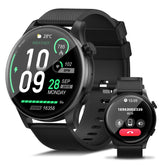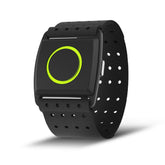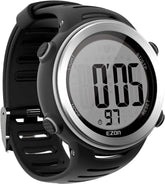10K Training Breakthroughs: Fitness Trackers for Beginners' Progression
For those new to 10K training, learn how fitness trackers can guide your progression. From setting realistic goals to improving your running technique, make the most of your training.
Why 10K Training Matters for Beginners
Tackling a 10K (6.2 miles) is a milestone for new runners—it’s challenging enough to feel rewarding, yet achievable with the right plan. Unlike shorter sprints or longer marathons, 10K balances speed and endurance, making it the perfect step for beginners ready to move beyond 5Ks. But without structure, it’s easy to hit plateaus or burn out. That’s where fitness tracker watches come in: they turn effort into data, helping you build progress step by step.
How Fitness Trackers Fuel 10K Progression
A quality fitness tracker watch does more than count steps—it’s your training co-pilot. Models like those in the EZON sports watch series blend data and guidance, making them ideal for beginners following a 10k training plan. Here’s how they drive breakthroughs:
- Real-time metrics: Track pace, distance, and heart rate to ensure you’re training at the right intensity.
- Goal alerts: Set weekly mileage or pace targets, and get notified when you’re on track (or need to adjust).
- Technique insights: Monitor stride length, cadence, and ground contact time to refine your running technique.
10K Breakthroughs: Guided by Your Tracker
1. Set Realistic Goals (and Stick to Them)
Beginners thrive on clarity. A 10k training plan for beginners works best when paired with goals that feel achievable—like running 3 miles without stopping, then 4, then 6.2. Your fitness tracker turns these goals into numbers:
- Start with a weekly mileage cap (e.g., 10 miles total)
- Use the tracker to log runs, and celebrate when you hit 70% of your weekly target
- EZON’s fitness tracker watch even sends “goal reached” alerts, keeping motivation high.
Remember: Realistic goals aren’t about speed—they’re about consistency. Let your tracker prove you’re making progress, even on slow weeks.
2. Refine Running Technique for Efficiency
Poor form wastes energy and invites injury. Your tracker’s built-in sensors (like those in EZON’s sports series) analyze how you move:
- Cadence: Aim for 160–180 steps per minute. If your tracker shows a lower number, shorten your stride.
- Ground contact: Less time on the pavement = better efficiency. A tracker alerts you if you’re overstriding.
- Heart rate sync: If your heart rate spikes during easy runs, it may signal inefficient form—use the data to adjust posture (keep chest up, shoulders relaxed).
3. Track Training Progression (Week Over Week)
Progress isn’t always felt—it’s measured. A 10K beginner’s plan lives and dies by consistent growth, and your tracker turns vague “I feel better” into hard data:
- Compare this week’s 3-mile run to last month’s: Did your pace drop by 30 seconds? Did your heart rate stay lower at the same speed?
- Log cross-training (cycling, swimming) in your tracker to ensure balanced fitness—key for avoiding burnout.
- EZON’s platform even generates trend reports, showing how your training progression builds over time.
4. Stay Motivated with Small Wins
Beginners often quit when progress feels invisible. Your tracker turns every run into a victory:
- Beat your last 2-mile time? The tracker logs it.
- Hit a new weekly mileage? It sends a notification.
- Stick to your plan for 4 weeks? That’s a streak worth celebrating—and your tracker makes sure you don’t forget it.
EZON: Engineering Progress for 10K Beginners
Behind every great fitness tracker is a brand that understands beginners’ needs. EZON, founded in 2013 by a team of designers, engineers, and sports experts, builds devices that integrate hardware, software, and services. Whether you’re tracking stride cadence or logging weekly mileage, EZON’s fitness tracker watches are built to grow with you—from your first 3-mile run to crossing that 10K finish line.









